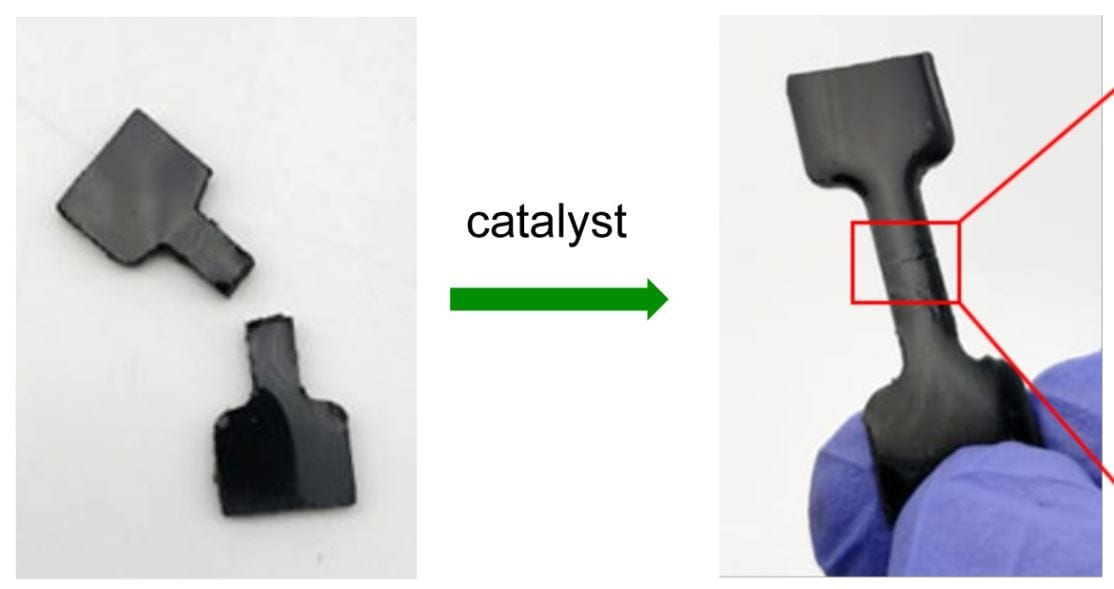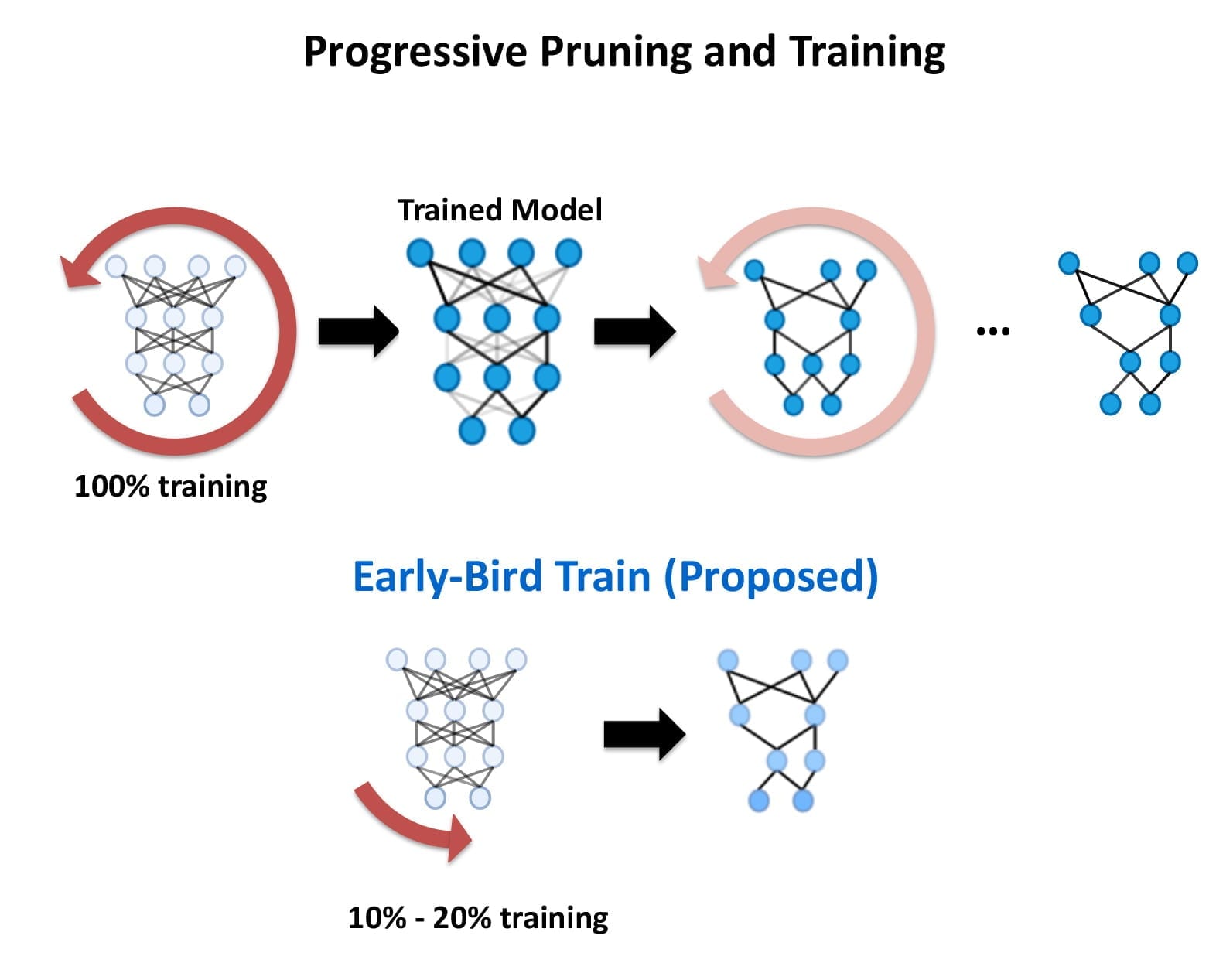
In addition to the highly useful practical applications, the new paper gives detailed fundamental studies on the mechanisms of the rubber repair.
Imagine a self-repairing rubber, or super-adhesive made entirely from waste materials.
It sounds like science fiction or a scene from The Terminator, but researchers have discovered a new kind of rubber and catalyst that together can be used with low energy consumption to make flexible, repairable, sustainable objects – including car tyres.
The new rubber material, made from cheap and plentiful industrial waste products sulfur, canola cooking oil and dicyclopentadiene (DCPD) from petroleum refining, can be completely repaired and returned to its original strength in minutes – even at room temperature – with an amine catalyst.
The new type of rubber can be seamlessly repaired if damaged and can also be recycled, says research leader Flinders University Associate Professor Justin Chalker, whose team’s breakthrough findings are described in leading international journal Chemical Science.
The amine catalyst used to trigger the reaction that causes the rubber to self-repair occurs within minutes in some cases and it is all done at room temperature, scientists say.
“This study reveals a new concept in the repair, adhesion and recycling of sustainable rubber,” says Associate Professor Chalker, adding too many plastics, rubbers and ceramics are not recyclable.
Each year in Australia, the equivalent of 48 million tyres reach the end of their life, only 16% of these are domestically recycled. Around two-thirds of used tyres in Australia end up in landfill, are stockpiled, illegally dumped or have an unknown fate.
This represents both a waste of resources and creates health and environmental issues. Each passenger car tyre contains approximately 1.5kg of steel, 0.5kg of textiles and 7 kg of rubber. – Source: Planet Ark
“It is exciting to see how the underlying chemistry of these materials has such wide potential in recycling, next-generation adhesives, and additive manufacturing,” Associate Professor Chalker says.
Researchers from the Chalker Lab at the Flinders University Institute for Nanoscale Science and Technology, with University of Liverpool and University of Western Australia colleagues, say the new rubber can be used as a “latent adhesive”.
“The rubber bonds to itself when the amine catalyst is applied to the surface. The adhesion is stronger than many commercial glues,” says University of Liverpool researcher Dr Tom Hasell.
“The polymer is also resistant to water and corrosion.”
Rubber bricks made out of this polymer can be chemically joined by applying the catalyst.
“In some cases, the amine catalyst causes the rubber to bond in just minutes, and it can be done at room temperature,” explains Flinders University lead author Sam Tonkin.
“The rubber can also be used as a latent adhesive, where it bonds to the surface of another piece of rubber when the amine catalyst is applied.
“Basically the rubber is not ‘sticky’ until the catalyst is applied.”
The Latest Updates from Bing News & Google News
Go deeper with Bing News on:
Sustainable rubber
- Nissei says 'inclusive growth' covers recycling, bioplastics, energy savings
San Antonio, Texas-based Nissei America Inc. is introducing new injection molding technology to reduce environmental loads while simplifying processes.
- AirBoss Reports 1st Quarter 2024 Results
AirBoss Manufactured Products' defense business was awarded a contract valued at up to $45 million to provide its Bandolier multipurpose energetic system to a NATO partner nation; Reduced borrowings ...
- Mycocycle Raises $3.6 Million to Transform Waste into Sustainable Raw Materials with Fungi
Compared to May 2023, Mycocycle now completes over 10 times as many mycelium-based treatments per month. The company’s bioremediation process blends the treatment with built environment waste (asphalt ...
- Six Aquatic Harvesting pumps to support sustainable, decarbonised agriculture
In this case study, we’re taking you into the innovative world of automated aquatic mechanical harvesting. It’s a radical development which could change the way our food, animal food and fertilisers ...
- 6ppd alternatives, AI and more: A sneak peek of ITEC technical sessions
Each day of the International Tire Exhibition & Conference is chock full of technical sessions and presentations on some of the industry's hottest topics. Here is a sneak peek of some talks you won't ...
Go deeper with Google Headlines on:
Sustainable rubber
[google_news title=”” keyword=”sustainable rubber” num_posts=”5″ blurb_length=”0″ show_thumb=”left”]
Go deeper with Bing News on:
New rubber material
- What we know about the SUNY New Paltz arrests one week later
University leaders, police, students, elected officials and the community differ on whether breaking up a campus protest encampment was appropriate.
- Arburg Showcases Elastomer Processing Portfolio at German Rubber Conference
Arburg presents its extensive portfolio for elastomer processing at the German Rubber Conference DKT in Nuremberg. Discover solid silicone production and more.
- Conti gaining ground in retreading with new development center
"Small changes can make a huge impact to a dealer's bottom line," Cox told Rubber News at the recent official opening ... and that we can use part of the end-of-life tire as a raw material for the new ...
- Global Synthetic Polyisoprene Rubber Market Set to Reach US$ 4.6 Billion by 2032, Fueled by Demand Surge in Automotive and Medical Sectors
The synthetic polyisoprene rubber market is likely to be driven by its widespread application in the manufacturing of tires, belts, footwear, and medical accessories such as medical gloves and medical ...
- Specialty Silicone Products (SSP) announces new hires
Ballston Spa, NY – Specialty Silicone Products (SSP) announce that Matt Couture as their new Controller, Jennifer Wagner as Human Resources Manager, and Ryan Davidson-Romanoff as New Product ...
Go deeper with Google Headlines on:
New rubber material
[google_news title=”” keyword=”new rubber material” num_posts=”5″ blurb_length=”0″ show_thumb=”left”]










